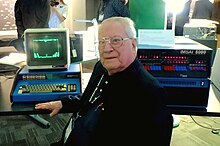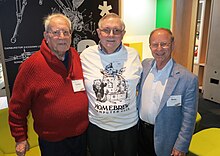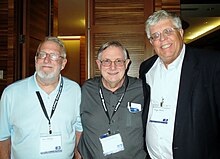
The Apple Computer 1 (Apple-1), later known predominantly as the Apple I, is an 8-bit motherboard-only personal computer designed by Steve Wozniak and released by the Apple Computer Company in 1976. The company was initially formed to sell the Apple I – its first product – and would later become the world's largest technology company. The idea of starting a company and selling the computer came from Wozniak's friend and Apple co-founder Steve Jobs. One of the main innovations of the Apple I was that it included video display terminal circuitry and a keyboard interface on a single board, allowing it to connect to a low-cost composite video monitor instead of an expensive computer terminal, compared to most existing computers at the time. Contrary to popular belief, it was not the first personal computer to include such video output, predated by machines such as the Sol-20 and add-in cards such as the VDM-1.
The hacker ethic is a philosophy and set of moral values within hacker culture. Practitioners believe that sharing information and data with others is an ethical imperative. The hacker ethic is related to the concept of freedom of information, as well as the political theories of anti-authoritarianism, socialism, liberalism, anarchism, and libertarianism.

Stephen Gary Wozniak, also known by his nickname "Woz", is an American electrical engineer, computer programmer, philanthropist, and inventor. In 1976, he co-founded Apple Computer with his early business partner Steve Jobs. Through his work at Apple in the 1970s and 1980s, he is widely recognized as one of the most prominent pioneers of the personal computer revolution.
Tiny BASIC is a family of dialects of the BASIC programming language that can fit into 4 or fewer KBs of memory. Tiny BASIC was designed by Dennis Allison and the People's Computer Company (PCC) in response to the open letter published by Bill Gates complaining about users pirating Altair BASIC, which sold for $150. Tiny BASIC was intended to be a completely free version of BASIC that would run on the same early microcomputers.

Li-Chen Wang is an American computer engineer, best known for his Palo Alto Tiny BASIC for Intel 8080-based microcomputers. He was a member of the Homebrew Computer Club and made significant contributions to the software for early microcomputer systems from Tandy Corporation and Cromemco. He made early use of the word copyleft, in Palo Alto Tiny BASIC's distribution notice "@COPYLEFT ALL WRONGS RESERVED" in June 1976.

The S-100 bus or Altair bus, IEEE 696-1983(withdrawn), is an early computer bus designed in 1974 as a part of the Altair 8800. The S-100 bus was the first industry standard expansion bus for the microcomputer industry. S-100 computers, consisting of processor and peripheral cards, were produced by a number of manufacturers. The S-100 bus formed the basis for homebrew computers whose builders implemented drivers for CP/M and MP/M. These S-100 microcomputers ran the gamut from hobbyist toy to small business workstation and were common in early home computers until the advent of the IBM PC.

The Kansas City standard (KCS), or Byte standard, is a data storage protocol for standard cassette tapes at 300 bits per second. It originated in a symposium sponsored by Byte magazine in November 1975 in Kansas City, Missouri to develop a standard for the storage of digital microcomputer data on inexpensive consumer quality cassettes. The first systems based on the standard appeared in 1976.
"An Open Letter to Hobbyists" is a 1976 open letter written by Bill Gates, the co-founder of Microsoft, to early personal computer hobbyists, in which Gates expresses dismay at the rampant software piracy taking place in the hobbyist community, particularly with regard to his company's software.

Hackers: Heroes of the Computer Revolution (ISBN 0-385-19195-2) is a book by Steven Levy about hacker culture. It was published in 1984 in Garden City, New York by Doubleday. Levy describes the people, the machines, and the events that defined the Hacker culture and the Hacker Ethic, from the early mainframe hackers at MIT, to the self-made hardware hackers and game hackers.
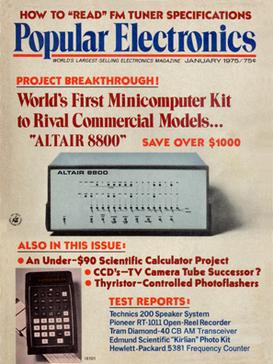
Popular Electronics was an American magazine published by John August Media, LLC, and hosted at TechnicaCuriosa.com. The magazine was started by Ziff-Davis Publishing Company in October 1954 for electronics hobbyists and experimenters. It soon became the "World's Largest-Selling Electronics Magazine". In April 1957, Ziff-Davis reported an average net paid circulation of 240,151 copies. Popular Electronics was published until October 1982 when, in November 1982, Ziff-Davis launched a successor magazine, Computers & Electronics. During its last year of publication by Ziff-Davis, Popular Electronics reported an average monthly circulation of 409,344 copies. The title was sold to Gernsback Publications, and their Hands-On Electronics magazine was renamed to Popular Electronics in February 1989, and published until December 1999. The Popular Electronics trademark was then acquired by John August Media, who revived the magazine, the digital edition of which is hosted at TechnicaCuriosa.com, along with sister titles, Mechanix Illustrated and Popular Astronomy.

Lee Felsenstein is an American computer engineer who played a central role in the development of personal computers. He was one of the original members of the Homebrew Computer Club and the designer of the Osborne 1, the first mass-produced portable computer.

Processor Technology Corporation was a personal computer company founded in April 1975, by Gary Ingram and Bob Marsh in Berkeley, California. Their first product was a 4K byte RAM board that was compatible with the MITS Altair 8800 computer but more reliable than the MITS board. This was followed by a series of memory and I/O boards including a video display module.

The Sol-20 was the first fully assembled microcomputer with a built-in keyboard and television output, what would later be known as a home computer. The design was the integration of an Intel 8080-based motherboard, a VDM-1 graphics card, the 3P+S I/O card to drive a keyboard, and circuitry to connect to a cassette deck for program storage. Additional expansion was available via five S-100 bus slots inside the machine. It also included swappable ROMs that the manufacturer called 'personality modules', containing a rudimentary operating system.
Cromemco was a Mountain View, California microcomputer company known for its high-end Z80-based S-100 bus computers and peripherals in the early days of the personal computer revolution.

The Cromemco Dazzler was a graphics card for S-100 bus computers introduced in a Popular Electronics cover story in 1976. It was the first color graphics card available for microcomputers. The Dazzler was the first of a succession of increasingly capable graphics products from Cromemco which, by 1984, were in use at 80% of all television stations in the U.S. for the display of weather, news, and sports graphics.

Altair BASIC is a discontinued interpreter for the BASIC programming language that ran on the MITS Altair 8800 and subsequent S-100 bus computers. It was Microsoft's first product, distributed by MITS under a contract. Altair BASIC was the start of the Microsoft BASIC product range.

Roger Douglas Melen is an electrical engineer recognized for his early contributions to the microcomputer industry, and for his technical innovations.
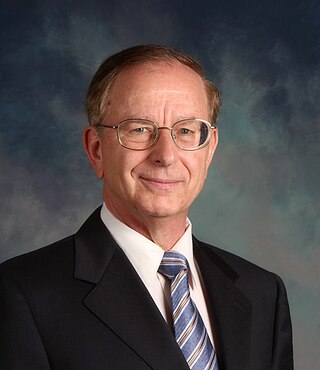
Harry T. Garland is a scientist, engineer, author, and entrepreneur who co-founded Cromemco Inc., one of the earliest and most successful microcomputer companies. He received the B.A. degree in mathematics from Kalamazoo College, and the Ph.D. degree in biophysics from Stanford University. Dr. Garland has been recognized as one of the most important innovators in the development of personal computers in Silicon Valley.

The Cromemco Cyclops, introduced in 1975 by Cromemco, was the first commercial all-digital camera using a digital metal–oxide–semiconductor (MOS) image sensor. It was also the first digital camera to be interfaced to a microcomputer. The digital sensor for the camera was a modified 1 kb dynamic RAM (DRAM) memory chip that offered a resolution of 32 × 32 pixels (0.001 megapixels).
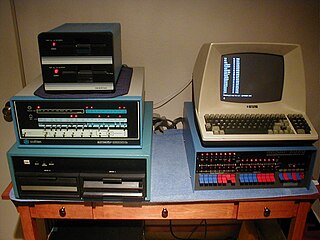
A vintage computer is an older computer system that is largely regarded as obsolete.
